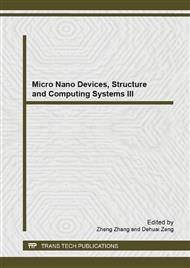p.278
p.282
p.288
p.292
p.295
p.301
p.307
p.313
p.319
Tree-Structured Parallel Regeneration Based on Regenerating Codes for Multiple Data Losses in Distributed Storage Systems
Abstract:
In distributed storage systems, erasure codes represent an attractive data redundancy solution which can provide the same reliability as replication requiring much less storage space. Multiple data losses happens usually and the lost data should be regenerated to maintain data redundancy in distributed storage systems. Regeneration for multiple data losses is expected to be finished as soon as possible, because the regeneration time can influence the data reliability and availability of distributed storage systems. However, multiple data losses is usually regenerated by regenerating single data loss one by one, which brings high entire regeneration time and severely reduces the data reliability and availability of distributed storage systems. In this paper, we propose a tree-structured parallel regeneration scheme based on regenerating codes (TPRORC) for multiple data losses in distributed storage systems. In our scheme, multiple regeneration trees based on regenerating code are constructed. Firstly, these trees are created independently, each of which dose not share any edges from the others and is responsible for one data loss; secondly, every regeneration tree based on regenerating codes owns the least network traffic and bandwidth optimized-paths for regenerating its data loss. Thus it can perform parallel regeneration for multiple data losses by using multiple optimized topology trees, in which network bandwidth is utilized efficiently and entire regeneration is overlapped. Our simulation results show that the tree-structured parallel regeneration scheme reduces the regeneration time significantly, compared to other regular regeneration schemes.
Info:
Periodical:
Pages:
295-300
Citation:
Online since:
April 2014
Authors:
Price:
Сopyright:
© 2014 Trans Tech Publications Ltd. All Rights Reserved
Share:
Citation:


